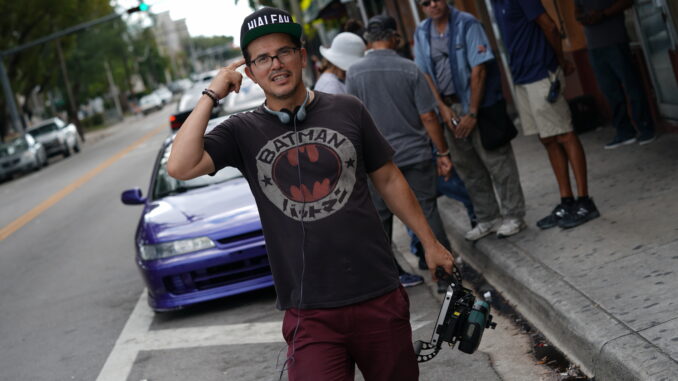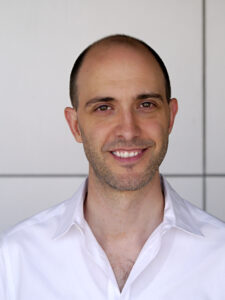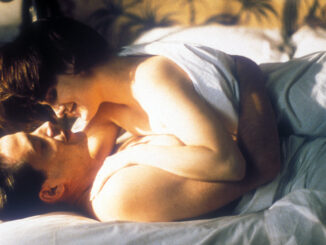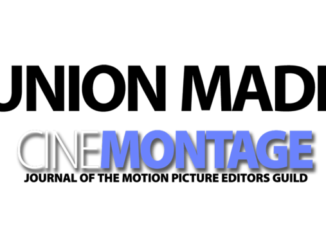
by Mel Lambert
Checking in with his director at the end of Day #2 during a first-cut assembly, picture editor Jamie Kirkpatrick received sage advice: “You need to live with this film, and shape it,” the director said. “Don’t worry about me.”
Of course, as a seasoned veteran with several TV series and over 20 feature films under his belt, Kirkpatrick ensured that actor John Leguizamo’s debut directorial outing, “Critical Thinking,” remained on-target. Based on real events that took place in Miami during 1998, the narrative follows the progress of high-school chess players as they move through Dade County regionals and Florida state contests, to the national final in Beverly Hills, under the guidance of an unconventional but inspirational teacher played by Leguizamo. (At least one critic has likened the film to director Ramón Menéndez’s “Stand and Deliver” (1988), in which a teacher successfully inspires his dropout-prone students to learn calculus.)
“I started editing during the first week of January 2019,” Kirkpatrick recalled. “I was surprised at the breadth and depth of John’s film knowledge; like me, he is a true cinephile. He told me that chess is a great equalizer, and a game of consequences. We locked and turned over the final edit in mid-April, and then mixed the first week of June, which was a very short schedule for such a complex film. ‘Critical Thinking’ was intended to have its world premiere at SXSW last April, but the festival was cancelled because of the COVID-19 pandemic. Luckily, Vertical Entertainment picked up the film and released it on-demand in early September.” The two-hour film also is currently available for download from multiple outlets.
During the past two decades, Kirkpatrick has built up a diverse filmography, including “Dave Chappelle’s Block Party” (2005), Sophia Coppola’s enigmatic “Lost in Translation” (2003), George Tillman Jr.’s “The Inevitable Defeat of Mister & Pete” (2013), and the indie hit, “My Friend Dahmer” (2017) directed by Marc Meyers. Recent editing credits include Perry Lang’s “An Interview with God” (2018) with David Strathairn, plus Marc Meyers’ “We Summon the Darkness” (2019). He has also edited multiple episodes of several TV series, including “The American West” for TNT and “Gravesend” for Amazon.

Addressing the film’s overall tone and narrative direction, the editor was faced with two immediate challenges. “John wanted the chess to look real; there should be no fake or confusing moves,” Kirkpatrick said. “And, secondly, he wanted to make the chess games exciting, to build tension and hold the audience’s attention. John wanted a hyper-realistic, cinema verité style; our DP was Zach Zamboni, who for over a decade had shot for [producer] Anthony Bourdain. Zach brings an incredible intimacy and energy to his work. We always had two cameras rolling, which meant there was lots of gold for me to mine. I wanted to honor John’s intentions during the cut.”
Because of conflicting schedules, Kirkpatrick was brought on as editor after the film had been shot and hence could not follow its progress on location. “John had some other acting commitments and we could not be with one another for long periods of time, which is an unusual workflow,” he says. “So, after our first four weeks together while putting together a rough cut against the script, I was left pretty much on my own. I sent John updated cuts from our edit suite at Light Iron in New York, which handled all of the film’s post production.”
Although the editor started at the beginning of the shot material and moved towards the film’s conclusion, there were several sections that he soon realized would need extra attention. “The chess tournament sequences, in particular, required a lot of work,” Kirkpatrick said. “These scenes contained games with a lot of complex chess moves. Because John comes from a theater background he likes to shoot the entire scene in multiple takes; I had a lot of creative options, not to mention a ton of footage from two cameras. And he and Zach [Zamboni] had planned certain in-camera effects – like whip pans for the finale – so knew I would use those. I knew I had to tackle those scenes early to give myself and my assistant, Matt Buckley, time to figure out what they could be. Matt and I have been working together for a few years and I rely on him for his candid input.”
Working in documentary style with two cameras meant that continuity became a major focus. “John had his actors memorize the real chess games from beginning to end,” the editor says. “They also played in real time, which helped maintain the sense of urgency. I used an upper video track in [Avid] Media Composer for continuity, loading the lower tracks with alternates takes from different cameras. Then I could cross cut as necessary to maintain accurate references during each scene. We also chose not to subtitle the Spanish; since nearly everyone in a Miami high school was bilingual, John and I agreed that we shouldn’t be pandering to one demographic over another. If you don’t understand any Spanish, it’s not our job to teach you.”
One scene of which Kirkpatrick is particularly proud involved the well-known – in chess circles at least – “Opera Game” that was played in 1858 at an opera house in Paris, between US chess master Paul Morphy and two strong amateurs. The game is often used by chess instructors to teach the importance of rapid development of a player’s pieces, and the value of sacrifices in mating combinations. “John’s character uses a magnetic chess board to illustrate the entire game to his class,” the editor says, “which was a great visual trick he adopted to make those scenes more dynamic.”
But the scene was running far too long. “John told me that we should not fudge or cheat the game, because real chess players would notice,” Kirkpatrick said. “By removing moves I cut it down from around 13 minutes to a more reasonable length, while also trying to retain the energy and urgency of the action. I determined when pieces had not been moved and cut between those as necessary – that way the audience would not notice the change. We also added some ADR lines to help the continuity. John’s reaction when I sent him the result was very rewarding. He was like: ‘Dude, I don’t understand what you did but it seems the same [as the first assembly].’ I was very pleased!” (Incidentally, Morphy finishes the Opera Game with a remarkable queen sacrifice.)
The editor also recalls that the film’s composer, Chris Hajian, joined the project early in the post-production process. “It’s rare to bring on the composer before picture is locked; usually we use temp score,” Kirkpatrick said. “But then you tend to fall in love with the temp and end up chasing that sound with the composer. Having early sketches from Chris in my Avid [workstation] meant that I could anticipate where he was taking a scene musically. We would pass between us rough cuts and musical ideas that helped me refine my edit. It proved to be a unique, incredible collaboration.”
In addition to production dialog and a guide music track, Kirkpatrick likes to have some temp sound effects laid up against his picture elements. “I spend a lot of time on sound design using tracks from an effects library,” he said. “John also wanted the sound to compliment the action; during a chess tournament the sound is very distinctive. He wanted the timer clocks to be realistic, as well as the sound of plastic chess pieces moving across the boards. And that design was dependent upon the chess player. While the more affluent opponents tend to have a calm, reserved style of play, our guys from Miami Jackson are used to street chess, so their style is much more aggressive. Our sound-effects editor, Andrea Bella, went to a local high-school chess club to record real chess clocks.”
Realism became the editor’s watchword. “To ensure accuracy with the game play, John brought on the real Marcel Martinez [a member of the high-school team, and now a rated chess player],” Kirkpatrick said. “On several occasions, I told Marcel that I wanted to do something editorially that I knew did not reflect what really happened in the game, but needed to make sure that he was okay with it. As Marcel conceded: ‘At my level, I might not buy it but, for the film, I can buy it!’ That helped me a lot.”
The editor’s favorite sequence comes at the end of the film during a one-on-one playoff for the national chess championship. “It’s a game that chess fans are still talking about,” Kirkpatrick said. “I wanted to emphasize the drama but remain faithful to the ups and downs of the game. In the back of my mind I was thinking of ‘Rocky;’ I want the sequence to feel like a fast-action sports movie. We had a lot of extras in those scenes, with many speaking parts. Again, I had to shorten it, but there were so many chess moves to accommodate. John was away during that time, and so I worked on my own for three or four days.
“We had agreed that too much happened in the ending sequence, with several secondary characters that we could eliminate as we moved towards the conclusion. But that meant I had to tie up a number of loose threads that are revealed when you excise something. We added some off-screen ADR to help those transitions, as well as an off-screen announcer. To maintain the pace of that final scene I tried a more stylistic editing style by speeding up certain sections of the chess play, although that’s a tool I try to use very sparingly.”
Kirkpatrick recalls that his true passion for editing began in the early ’90s when, as an intern, he was invited to sit in on an editing session for “Little Giants” with executive producer Steven Spielberg and editors Don Cambern and Billy Weber. “I witnessed how Steven was able to re-structure a mediocre dialogue scene that hadn’t been testing well into a laugh-out-loud moment in the film, just using ADR and some unused reaction shots. And I realized: This is where all the magic happens; this is where I want to be!”






